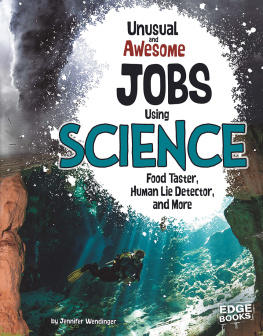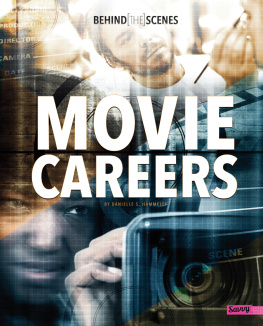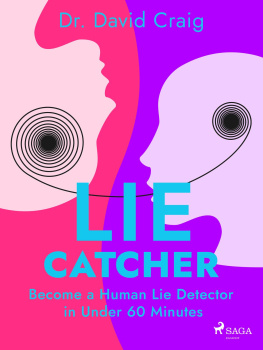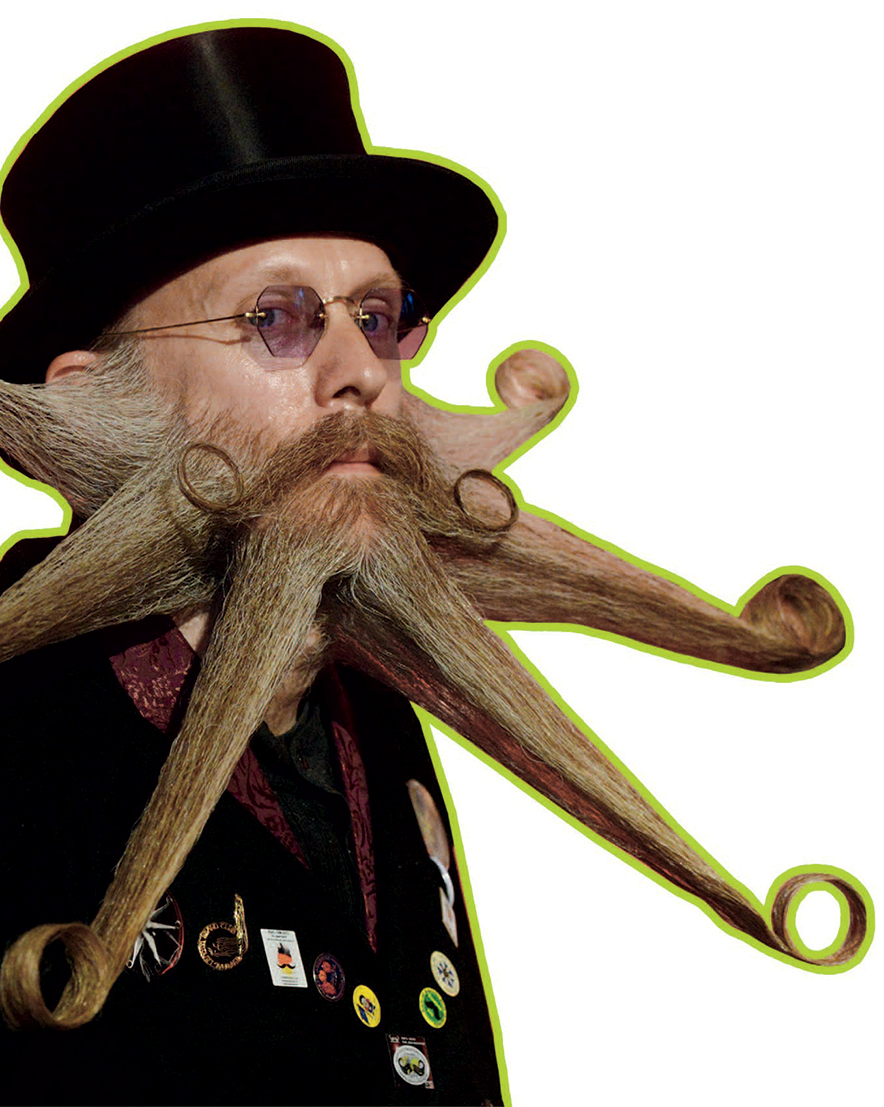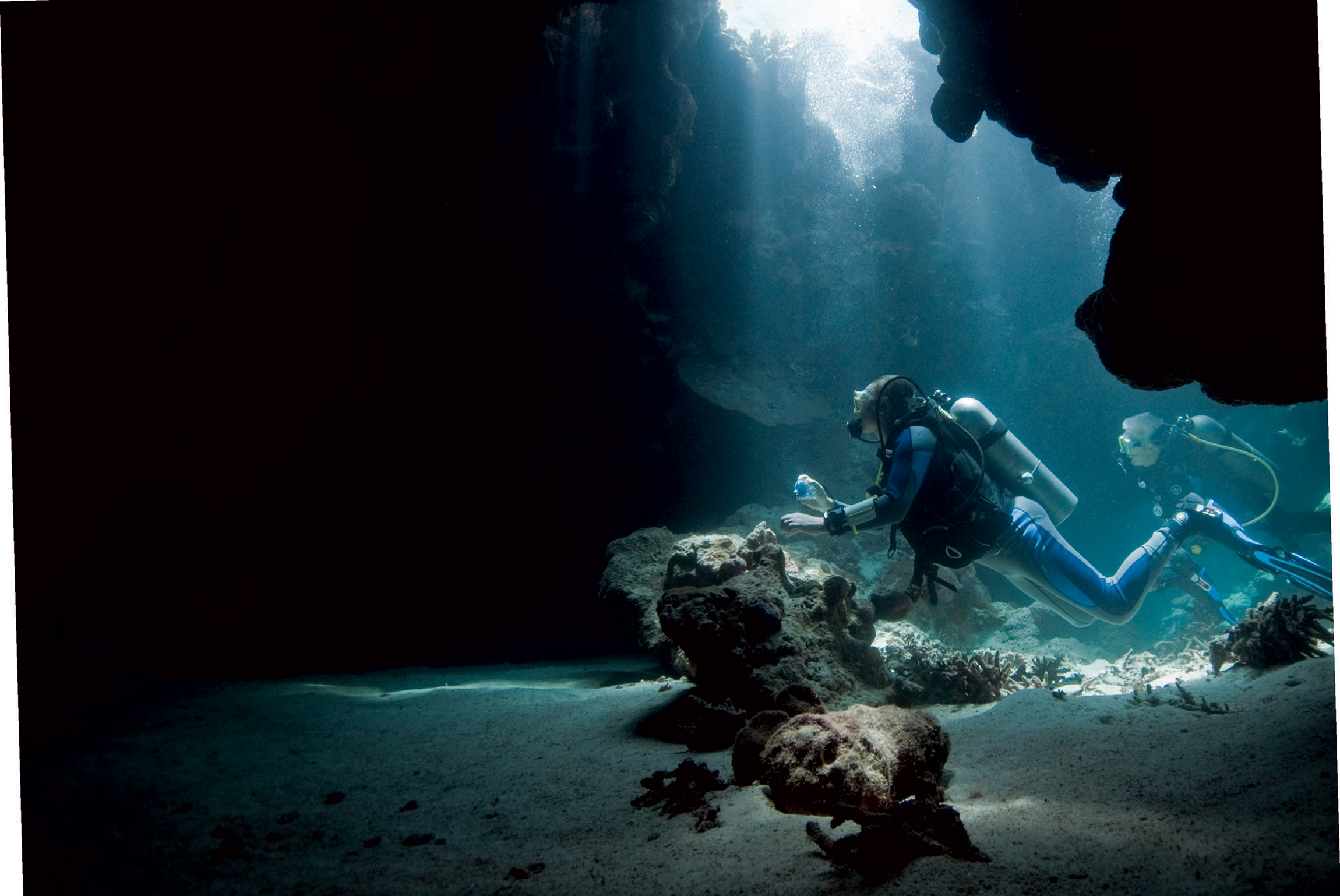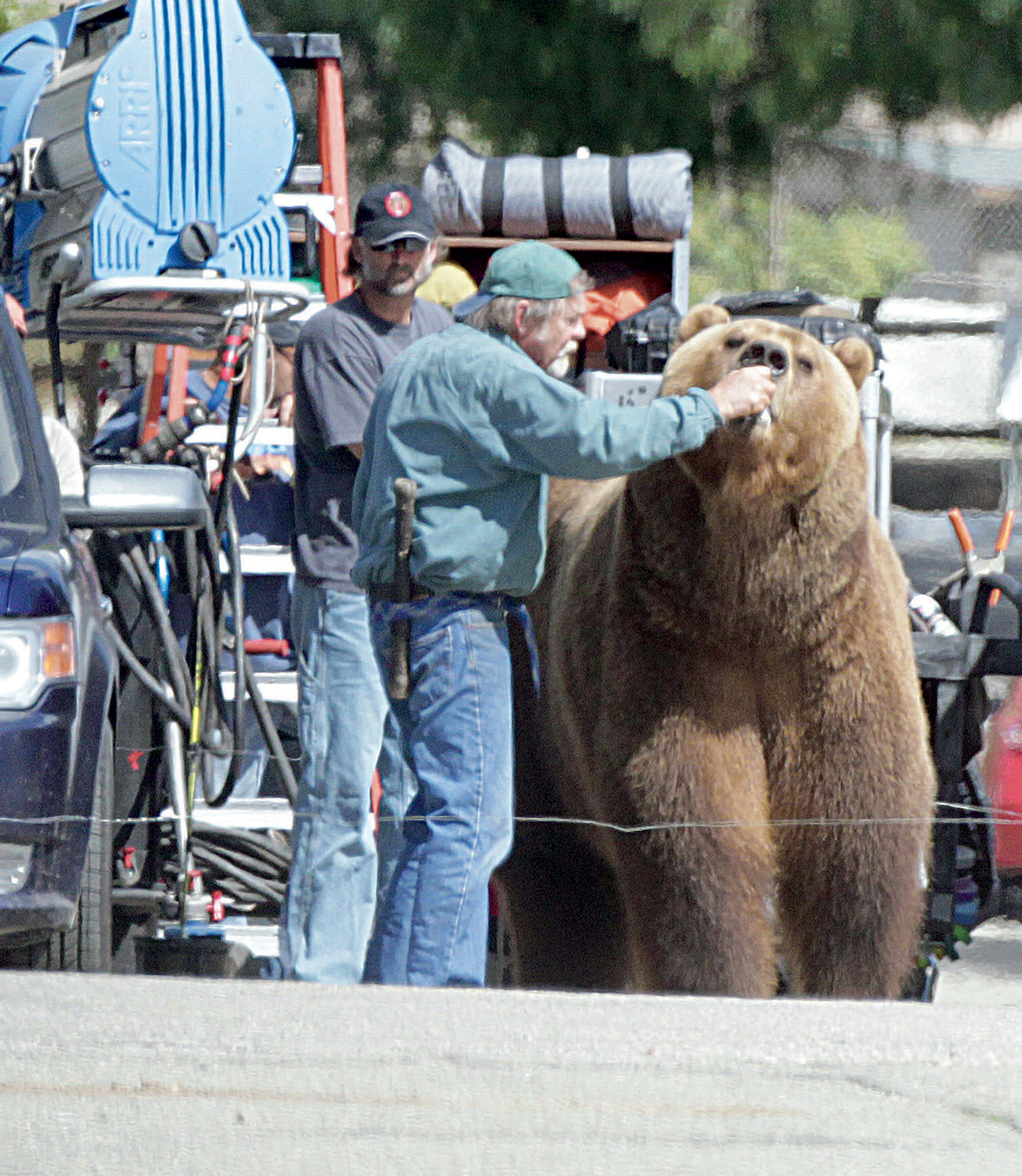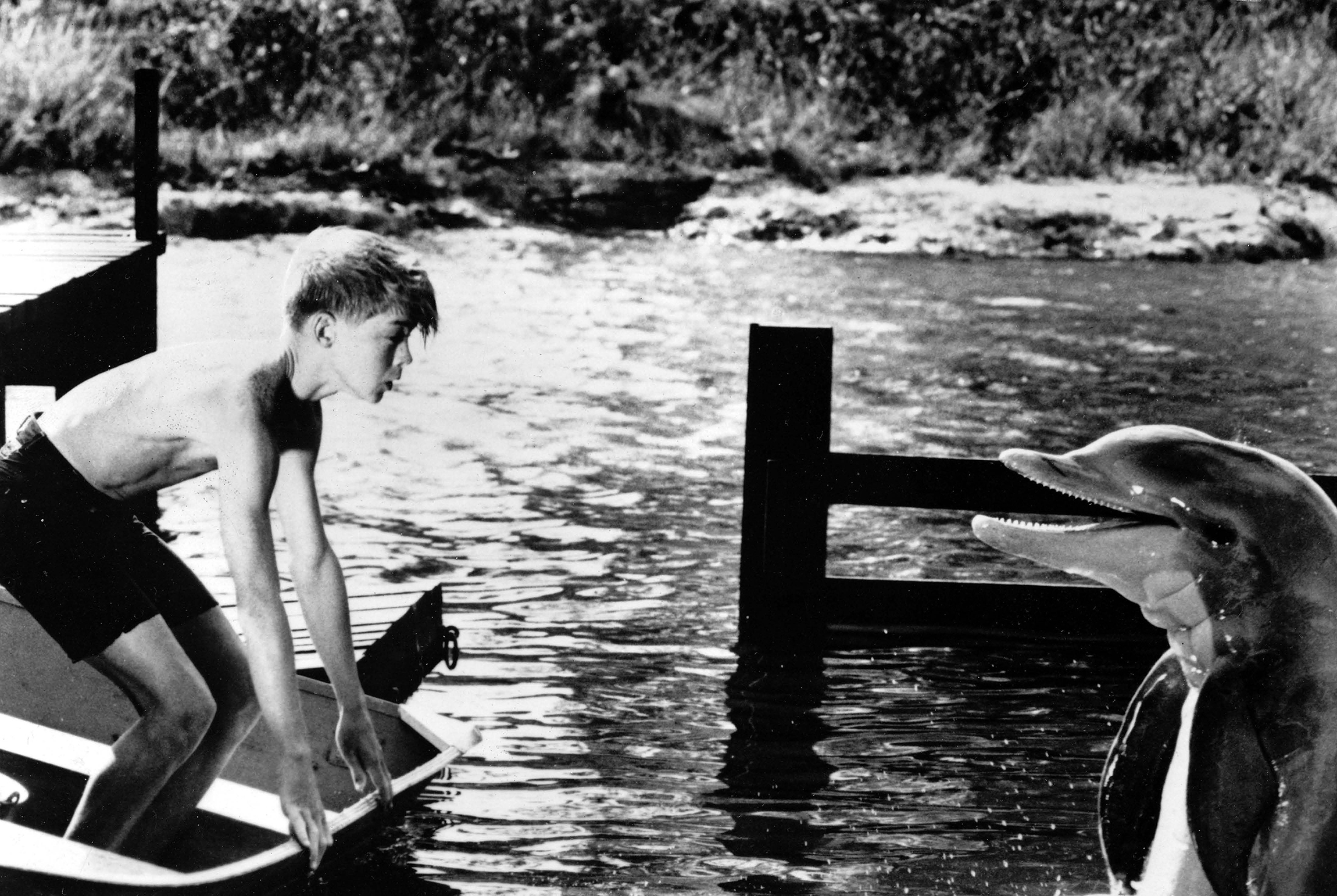When you think of science jobs, do you think of long white coats and bubbling testtubes? Science careers dont always have to take place in a laboratory.
The following jobs show how people use science in unusual ways to make money. Somejobs, like professional food tasting and beard growing, explain how food scienceworks. Others, like animal training and human lie detection, show how behavioralscience is useful. Youll see just how unique, challenging, and downright adventurousa career in science can be.
Above: An adventure guide points out sites near Chamonix, France.Left: A beardershows his unusual facial hair design.
CAVE DIVER
special skills: swim 60 feet (18 meters) under water on one breath of air
education: cave diving certification
prior experience: must have completed more than 100 dives
hourly schedule: work hours vary and may require travel
salary: diver sets pay rate
HELP
WANTED
A team of cave divers puts on scuba gear. The divers prepare to jump in a hole ofwater no bigger than a small pond. The divers know the water is deep and can stretchhundreds of feet below. They are preparing to jump in a .
Blue holes are underwater caves. Long ago blue holes were on dry land. Some lookedlike rocky cliffs. Birds nested there, and other animals made homes in the cliffs.Then the Ice Age came and froze over the land. When the ice melted, sea levels roseand filled up the cliffs like cups of water.
Some cave divers who explore blue holes are underwater . They search for things like bones,tools, and pottery.
blue hole an underwater cave
archaeologist a person who learns about the past by digging up old buildings or objectsand studying them
artifact an object made by human beings, especially a tool or weapon used in thepast

YOUD BETTER BELIEVE IT!
Cave divers have found the bones of lizards, bats, sloths and elephants.
extinct no longer living; an extinct animal is one that has died out, with no moreof its kind
When an is found, team members record its location. Then divers make manydangerous dives back to the site. The divers gather every bone of every skeleton.They collect other material for testing too. On a dive near Mexico, divers collectedbat droppings found near a human skeleton. Later the droppings helped scientistsdetermine that the skeleton was more than 12,000 years old.
Underwater caves have very little oxygen. The low oxygen level keeps the artifactsin good condition. Divers know bringing artifacts to the surface can be tricky work.They realize certain artifacts, such as pottery, can be damaged by air. The diverstake special care to preserve the artifacts they find. They know their work helpstell the story of how people lived thousands of years ago.
A cave diver explores the watery depths, where rareartifacts can be discovered atany moment.
HOLLYWOOD ANIMAL TRAINER
special skills: patience and the ability to read animal body language
education: degree in animal science is helpful; board certification occasionallyrequired
prior experience: work with animals; some trainers need to put in 300 hours beforethey can train
hourly schedule: some days on set can last as long as 12 hours
salary: $20,000 to$50,000 per year
HELP
WANTED
In 1943 a dog named Pal landed the starring role in Lassie . But Pal had help witha Hollywood animal trainer by his side. Hollywood animal trainers are people whowork with animals to help them perform in movies. Some of these animals may alsoappear in TV shows or commercials.
Trainers usually work with one kind of animal. They might train animals, like tigers. Trainers becomeexperts by focusing on one type of animal. They learn how to read the animals mood.They know when its a good time to teach a trick and when its not. This understandinghelps the animal build trust. Trust keeps both the animal and trainer safe.
domestic living near or with human beings
exotic very different or unusual
Trainers work with a grizzly bear on the set of the movieWe Bought a Zoo.
YOUD BETTER BELIEVE IT!
Training animals can be very dangerous. In 2008 a youngbear named Rocky was being trained to wrestle in movies. Rocky attacked and killedone of his trainers, Stephan Miller. A fellow trainer was able to get the bear offof Miller within seconds, but the bite and claw wounds proved fatal.
Actor and animal meet on the set of Flipper.
A scientific background in biology is very helpful when training animals. The dolphinsthat starred in the 1960s TV show Flipper had trainers who knew how to do more thanteach tricks. The trainers knew how to balance the tanks salt level so the dolphinswouldnt get sick. They also knew how to reward the dolphins without overfeedingthem. It was important for the trainers to understand how to care for the dolphins.Good health helped the animals learn tricks.
Whether they are working with dolphins or a pet like Pal, Hollywood animal trainersare hard workers. They care for their animals both on and off set. Their dedicationcan make this type of work an around-the-clock job.
biology the study of plant and animal life
ADVENTURE GUIDE

